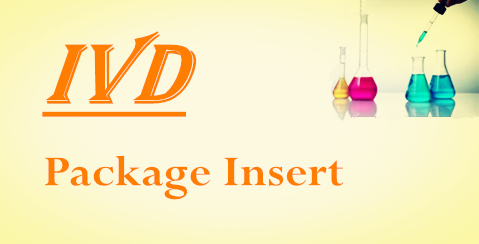
In vitro diagnostic reagents (IVD) are those reagents intended for use in diagnosis of disease or other conditions, including a determination of the state of health. The Guiding Principle for the Instructions of In Vitro Diagnostic Reagents has been issued on Sep 11th, 2014, and contains the basis requirement for instruction for IVD. The instruction is the required document for IVD registration or record. The New CFDA approval process for in vitro diagnostics, please click here.
The instruction must state the following information, except in case where it is not applicable. In addition, all information must be in Chinese, and the English abbreviations with international /industrial recognition can appear in the bracket behind Chinese. If there is no proper Chinese term for the expression of IVD, it can use corresponding English or abbreviations.
1.Product Name
2.Packing Specification
3.Intended Use
The first part shall detail the intended use (qualitative/quantitative determination, self-testing, validation, etc.), sample type, analysis, and so on. The specific expressional forms can make appropriate adjustments in according with product feature. The sample source shall be noted if the samples come from special subjects such as pregnant woman, newborn, and so on.
The second part shall detail the clinical applicability and background which are related to intended use, and explain relevant clinical diagnostic methods or laboratory diagnostic methods, and so on.
4.Inspection Mechanism
5.Main Composition
5.1For Reagents:
Detail whether each component of kit with different batch number can be interchange or not for multiple-reagents product.
Detail the information of consumable such as name, quantity, and so on if any.
5.2For the necessary reagents that are not provided
5.3Calibrator and quality control
6.Storage Condition and Validity Term
6.1Storage condition
6.2Validity term
6.3 If the stability of each component is different, the storage condition and validity term of each component shall be specified respectively.
7.Applied Instrument
8.Specimen Requirement:
9.Inspection Method
- Reagent preparation: dilution, mixture and other necessary procedure.
- Test condition: PH value, temperature, time and wavelength of each step, stability of final reaction product, precautions of each step, and so on.
- Calibration procedure (if any): preparation and usage, and drawing method of calibration curve.
- Quality control procedure: usage and quality control method.
- Test result calculation or read, include explanation of every coefficient and every calculation steps. If possible, it shall be illustrated.
10.Positive Estimate Value or Reference Interval
11.Inspection Result Explanation
12.Inspection Method Limitation
13.Performance Index
14.Cautions
15.Marks Explanation
16.References
17.Basic Information
Registrant (Record)/ Manufacturer Name
Address
Address of manufacturing site
Contact information
After-sales service organization Name
Contact information
Agent Name
Address
Contact information
18.Registration Serial Number/Record Number/Technical Requirement
19.Instruction Manual Approval and Revision Date

